Unless the pandemic takes another horrible turn, today should be the day when self-contained accommodation reopens and that means today might not be a terrible day to give you some ideas for a 1 week Dorset staycation itinerary.
(Let me just point out that I know there are two uses of the word “staycation” and the one I’m using here is the one lots of people don’t like. It’s on purpose!)
This is the Poole & Purbeck edition: I’ll show you a little more along the coast and a little more inland another time but if you’re after beaches, water activities and busy days, this is maybe the part of Dorset for you. It’s a mix & match itinerary, featuring nine days to take inspiration from, including stuff for kids and stuff for bad weather days.
Day One
My first recommendation would be to head over to Brownsea Island. Normally you can take the short ferry from Poole Quay which returns the long way via the island cruise or the really short ferry from Sandbanks but due to the plague, the Sandbanks ferry isn’t running and the Quay ferry isn’t doing the islands cruise. You buy your ticket from either the orange or the yellow kiosk on the quay but you’ll probably get on whichever ferry is departing next and you’ll definitely come back on whichever ferry is departing next, so you don’t need to worry about which company your ticket is for. Another plague thing: at the moment, you have to prebook your ferry & island entry together online so if you’re reading this in 2021, make sure you’ve done that before turning up.

If you’re reading this in the future, Brownsea Island is a National Trust property so you’ll have to pay for the ferry and then you’ll have to pay for entry to the island when you get there, unless all you want to do is stand on the jetty for an hour. Of course, if you’re a National Trust member, you just wave your card and go in for free.
Actually, half the island belongs to Dorset Wildlife Trust and there’s a further fee if you want to go into their nature area. For what it’s worth, I never have. Pick up a leaflet with a map and spend the day reveling in the pine forest, the heathlands and the beaches. The further you go from the jetty, the quieter it will be, as a general rule. If you’re into that sort of thing, this is the birthplace of Guiding and Scouting, so make a stop at the Stone that commemorates Baden-Powell’s experimental camp and then you can go down to the campsite itself and pop into the trading post for souvenir badges, postcards, t-shirts etc.

If you’re quiet, you might see sika deer hiding in the trees and if you’re really quiet, you might see red squirrels. You don’t have to be quiet to see the peacocks, who will come and pester you for your lunch. There’s a cafe by the jetty but I’d take a picnic – there’s no shortage of nice places to sit and eat it.
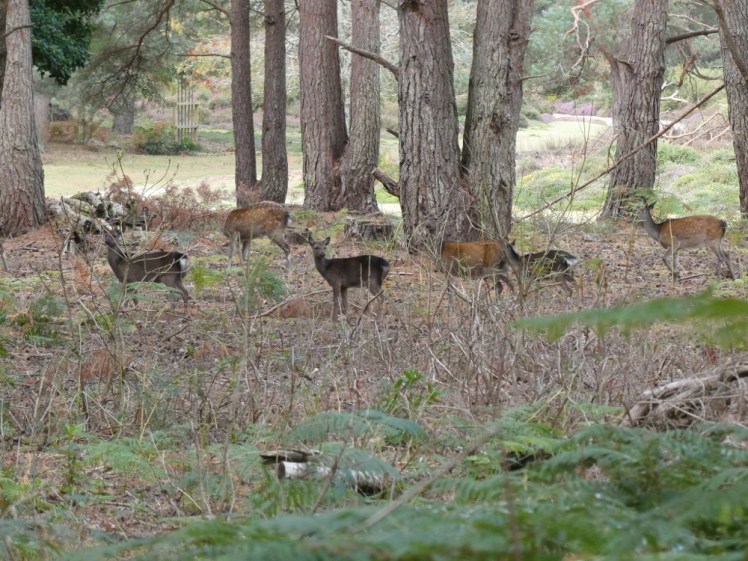
When you get back, take in the delights of Poole Quay. The famous pottery is no longer here but you can still buy the pots and vases and bowls. My extended family has a lot of the pink & purple floral stuff and I obviously have a soft spot for the Volcano pattern but if they have them in the shop, a real souvenir of Poole is the green & black ceramic dolphin. You’ll be hard pressed to find a house within ten miles that doesn’t have one, even if it’s hidden in a cupboard.

Other than that, the quay is lined with pubs and kiosks and is probably the centre of Poole’s nightlife. I like the Poole Arms, which is covered from roof to ground in green tiles and the Jolly Sailor, which looks exactly like a pub should. If you’re after something more upmarket, there’s assorted eateries in the Dolphin Quays development or various Italian places in the opposite direction and the Hotel du Vin hiding away down Thames Street. And of course, there’s an abundance of great fish & chip shops.

Poole Museum will keep you busy for a little while. Its star exhibit is the Poole Logboat, a ten metre Iron Age canoe carved out of a massive chunk of oak tree and found in the harbour. Every school child from the surrounding ten miles went to Scaplen’s Court for a Victorian day and it still does a school programme but I believe it’s open to the general public. It’s a medieval inn from the 1300s with various exhibitions and a nice courtyard garden.
And of course, down the back of the Quay is the far end of the High Street, which is narrow and atmospheric and home to the original Lush store. Don’t bother venturing any further than Orchard Plaza; after that it’s just exactly the same high street that you have in your own town.
Day Two
You’ve probably come to Dorset to appreciate our beaches, so today we’re going to go to Bournemouth. There’s a lot of beach. It stretches from Sandbanks, down at the mouth of Poole Harbour, all the way almost to Hengistbury Head but today we’re sticking around the area between Bournemouth and Boscombe Piers.

The golden sand and fish & chip shops could keep you occupied for most of the day. Bournemouth has an award-winning beach, literally – it has a page on its website dedicated to listing its awards. But if you’re after a little more action, the old pier theatre is now an indoor climbing, high ropes & adventure centre with the world’s first pier-to-shore zipline.

Another bad-weather option is the Oceanarium, right on the seafront. A friend of mine won a poetry competition, aged twelve, to open it and I’ve still never been. But I’ll get round to it one day. It appears to have everything you’d expect of a big aquarium, including talks and feeding times and four conservation programs.
And of course, central Bournemouth is right there. Take a walk through the Gardens, which run all the way from the beach up to Branksome, paddle in the stream in the Lower Gardens , take shelter from the rain in the new cinema complex and enjoy the food and the nightlife – a step up from the Quay.
If you head east to Boscombe Pier, you’ll find the artificial surf reef. It umm… it never worked. You can surf by Bournemouth Pier, although I don’t think it’s quite up to what Devon and Cornwall can offer the serious surfer. Boscombe Pier is a little less adrenaline-ridden than Bournemouth: it has mini golf but it’s mostly just for strolling, although there’s volleyball, table tennis, bouldering and slacklining back on solid ground.
Day Three
Today we’re going to head out to a more Victorian bit of seaside. Either drive around the harbour via Wareham or take the chain ferry across the harbour mouth from Sandbanks to Studland (be warned, the ferry is out of service more often than it’s actually running, but it’s a great shortcut and a fun little trip) and then park at Norden, at the park & ride. I know that doesn’t sound very exciting but it’s the eastern terminus of the Swanage Railway, which runs steam trains to Corfe Castle & Swanage. They’re not on every day, sometimes it’s the heritage diesel trains and sometimes there are no trains at all, because it’s entirely volunteer-run and funded, but they tend to put the steam trains on when tourists are likely to be around.

Hop off at Corfe first and take in the village and the ruined castle. Corfe Castle is National Trust so again, free to cardholders. It’s a thousand years of history, built by William the Conqueror almost as a hunting lodge and destroyed in the English Civil War and very atmospheric, far more so than if it was intact. The village is also very pleasant in a really old-fashioned way, other than the busy road winding its way through. When you’re done with Corfe, get back on the train and chuff your way down to Swanage.
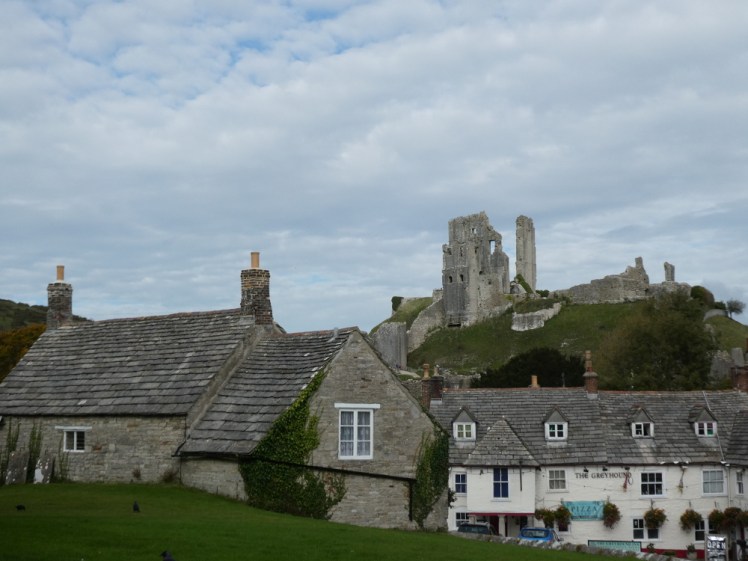

Swanage is a Victorian seaside resort, not quite as flashy as Bournemouth. You’ll find your fish & chips here but you’ll also find local artisan food shops and a museum full of fossils and rocks, for this is the Jurassic Coast. I wrote a post about Swanage last year, so go on over there to see where to eat and what to do. Enjoy the beach, perhaps go out rowing or take a pleasure cruise, walk along the restored pier or even go diving – this bit of coast is very popular for scuba diving, although you have to already have the relevant qualifications. I’m sure you can find a dive school to earn your qualifications if that sounds like a good thing to you.
I like to walk along the cliffs to Durlston. It’s a pretty easy walk of less than two miles, with clifftop views, to Durlston Castle. It’s not actually a castle, or rather, it’s not and never has been a defensive structure. It’s the aristocrat equivalent of a playhouse at the end of the garden. But it has a nice cafe, nice views (you might even see the Isle of Wight if the weather’s ok) and you can walk down to the great stone globe and back.

Day Four
We’re doing another day on Purbeck today. As you’re passing through Wareham, stop off for an hour or two to enjoy the river. By the bridge, on the other side from the quay, you can hire a canoe, rowing boat, stand up paddleboard, kayak or even a motorboat. I personally recommend a canoe – they’re less specialised than kayaks but they’re infinitely more maneuverable than the rowing boats, which are nonetheless a wonderful romantic thing to play in.

When you’re done, get yourself over to Worth Matravers. This is one of those chocolate-box villages, with stone cottages and a duck pond.

Walk down to the quarries and Winspit and then along the coast east to Dancing Ledge, which is a natural limestone pavement popular with climbers, with a swimming pool blasted out of it for the old Durnford School at Langton Matravers. This was the school of Ian Fleming (who hated it) whose name you might recognise from the James Bond books.
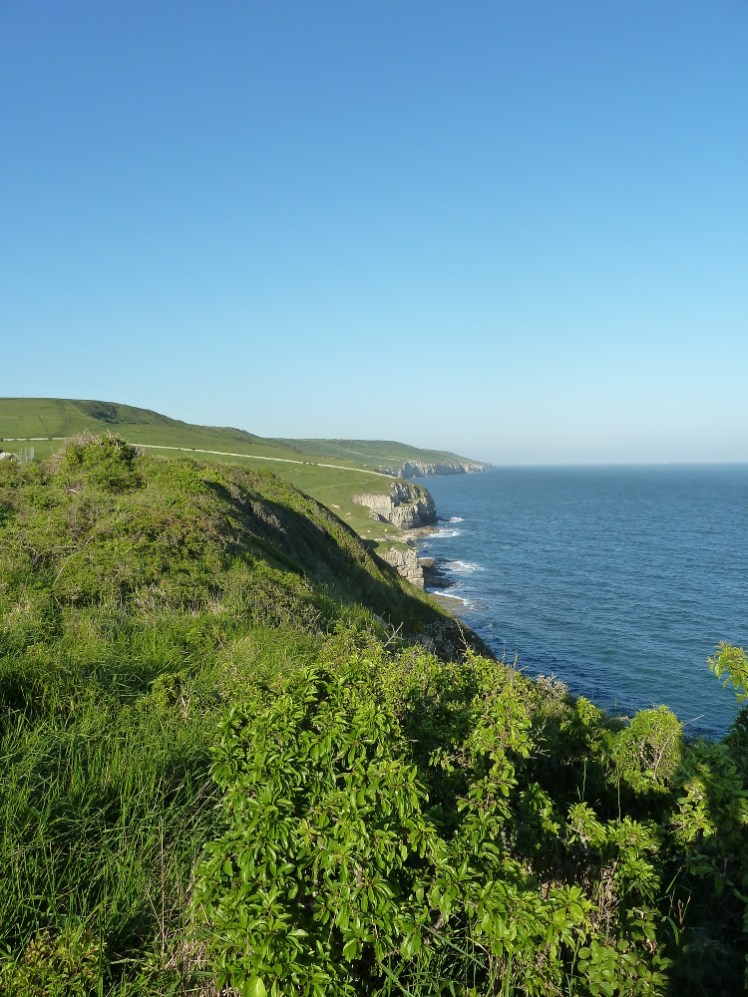
From here you could walk up to Langton Matravers but I’d walk back and take the valley from Seacombe back up to Worth. Make sure you stop at the Square and Compass. It’s a proper old-fashioned – by which I mean 18th century sort of old-fashioned – country pub. It doesn’t have a bar but instead two serving hatches and the only food it does are pasties and pies, so after your walk, sit outside and enjoy the view with a pint of local cider and a pasty.
Day Five
Another beach day today and we’re off to Sandbanks, one of the most expensive parts of the entire world. Wave to Harry Redknapp, beloved local celebrity while you’re there, although I believe he now lives in Canford Cliffs instead of the big brown house on the tip of Sandbanks.
There are three places of interest. Sandbanks beach itself is on the peninsula, best accessed through the last car park before the one-way system. It’s a great and glorious bit of beach, probably even better than Bournemouth Beach.
But on those rare occasions when I go there, we go to Shore Road, which is just about where the peninsula meets the mainland. It’s a little quieter there but the sand is just as golden and beautiful and you get the same endless views across the Channel.

When you’ve had your fill of sunbathing and sea-swimming and buckets and spades, come over the other side of the road to the harbour side. This shallower, more sheltered bit of water is incredibly popular for windsurfing and kitesurfing and if you don’t have your own equipment, or any knowledge or experience, you can do tasters or full lessons or even courses in either, or paddleboarding or sailing, or just rent the necessary equipment.
If you get hungry, there’s the Jazz Cafe at Shore Road or Rick Stein’s place opposite the Sandbanks main car park. I’m the sort of person who will take a picnic basket to the beach so I can’t personally recommend either but they seem popular and I’ve heard good things about them and I have been for a drink at the Sandbanks Hotel (it’s fine. It feels like it’s for people a bit less urchin-like than me).
Day Six
Take the chain ferry over from the end of Sandbanks to Studland and spend the day on this quieter, wilder stretch of beach. There are three beaches here, all facing onto the fairly shallow and sheltered Studland Bay. Incidentally, Studland Bay is absolutely infested with tanks – an experimental rehearsal for D Day discovered that tanks simply do not float – which makes it an interesting place to dive, if you’re correctly qualified.
For those of us who aren’t, there’s four miles of beach. The northermost is Knoll Beach, which is wide and sandy and lovely and has a 1km naturist area. Next is Middle Beach, which is my favourite. It’s less broad and vanishes altogether at high tide. It gets smaller every year – it’s at the bottom of some cliffs and they have a tendency to collapse in storms. Round the corner, accessed via a separate road because of the collapsing cliffs, is South Beach which is less touristed than Knoll. Knoll Beach has all the facilities you’d expect: cafes, beach shops, toilets etc. Middle and South both have a cafe.
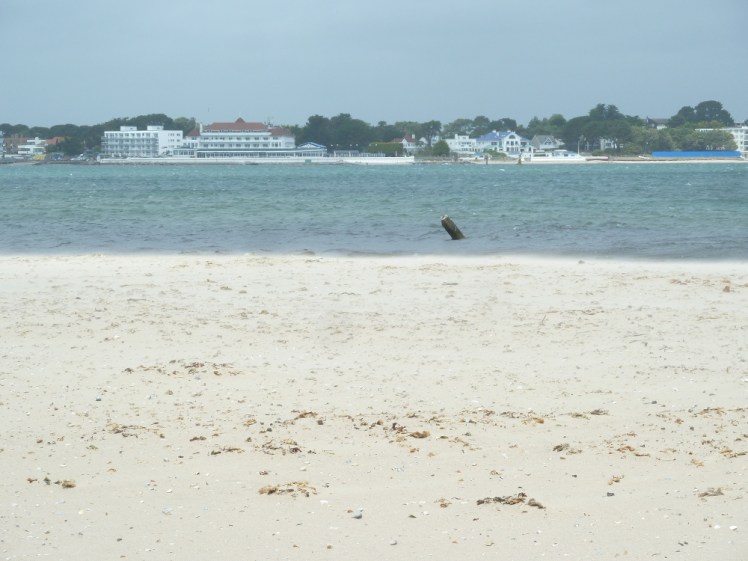
If I’m down on Studland, I’m almost certainly going kayaking with Fore/Adventure who I heartily and lovingly recommend. Their HQ used to be down on Middle Beach but the aforementioned storms have forced them into a special building up in the car park. I like doing the trip out to Old Harry Rocks but they also do fishing & foraging trips, bushcraft and watersport hire. I’m hoping to do my Paddle Discover award with them this summer, but we’ll see how that goes. Two years ago, I liked their group wetsuits so much that I bought one of my own.

When you’ve had your fill of beach and watersports, there are two great food options down here. I love the Bankes Arms, which is another old-fashioned country pub. The food is expensive but substantial – a simple cheese baguette has an actual block of cheese in it. It’s the sort of pub with a roaring fire and several wet dogs lying on the floor. A little more upmarket is the Pig on the Beach which does good and posh food simply and from suppliers within 25 miles and their own kitchen garden.

Walk off your lunch by strolling along the cliff to Old Harry. It’s a little further than I realised when I did it at Christmas with Tom but it’s not too far and when there are breaks in the trees, you get some spectacular views, including over Old Harry itself from the Foreland. Especially if you’ve been out kayaking, it’s nice to stand and look out at those rocks that you’ve just paddled out to. Enjoy them especially if there’s a GCSE geography student in the family, by the way – this is a literal textbook example of coastal erosion.
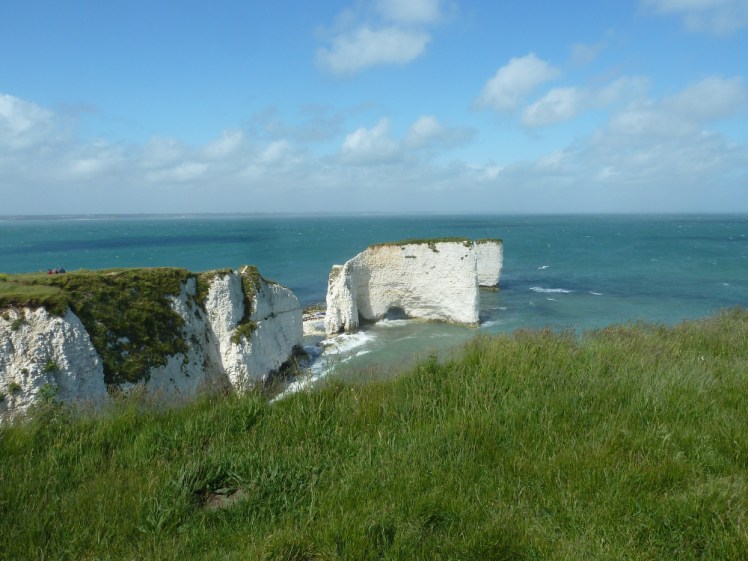
If you’re still not tired, take a detour to RSPB Arne on the way back, to stroll in their forest and down to Shipstal Beach, which looks out onto Poole Harbour and Long Island.

Day seven
Ok, fine, Lulworth and Durdle Door. These two have been in the news in the last year for the obscene number of tourists, who’ve blocked roads by parking despite there not being space to park, who’ve crammed in like ants in an anthill rather than human beings during a pandemic, and who’ve caused themselves severe injuries jumping off Durdle Door. Don’t do this. If there are signs saying Lulworth is full, please pick something else to do today.
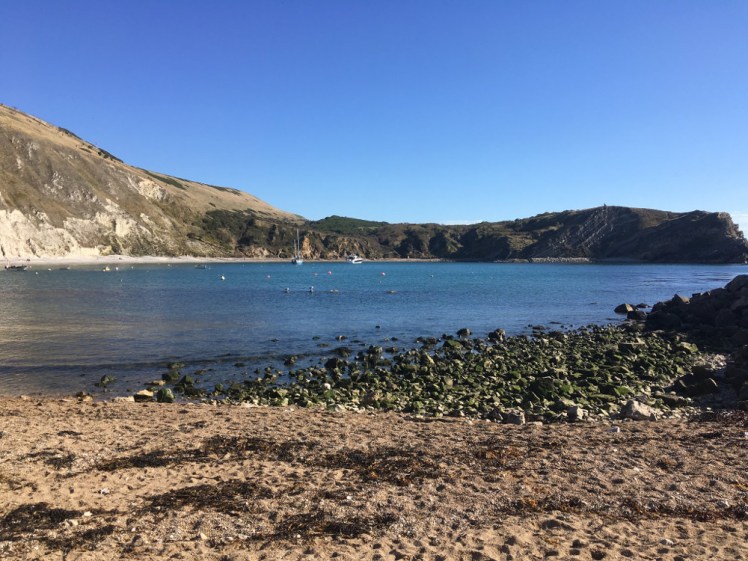
There are actually two Lulworths. East Lulworth is home to the castle, which is home to Camp Bestival. When there are no festivals on, you can visit Lulworth Castle, supposedly the inspiration for Enid Blyton’s Malory Towers. It’s a nice square castle with a tower at each corner and back in the dark ages, I abseiled off one of them.
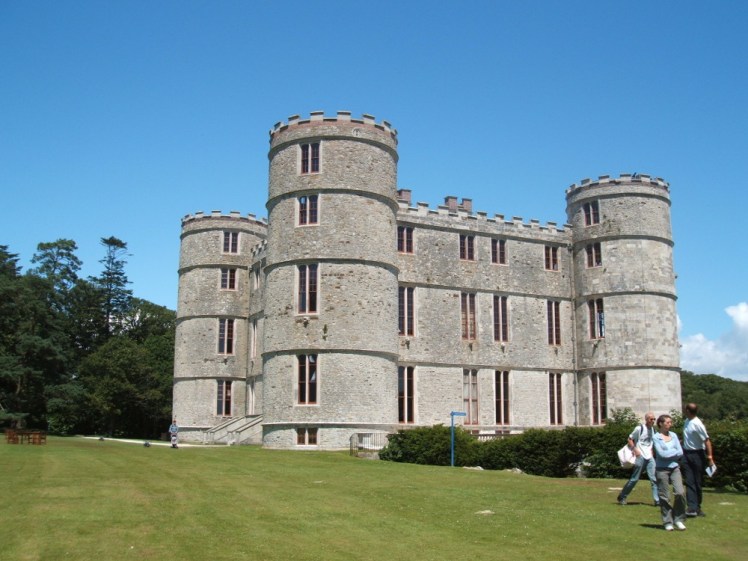
Carry on down the road and you reach West Lulworth. Please please don’t park along the sides of the narrow roads. There’s a huge (and expensive!) car park there and if it and its overflow are both full, Lulworth is too busy. But if it’s not too busy, Lulworth Cove is a gorgeous round bay with steep sides and such blue water. Cross up to Stair Hole if you’d like to see some geological folding going on. What I do at Lulworth is take the steep path up the hill behind the car park and walk to Durdle Door. It’s not a very long walk – just over a mile from the car park to the headland – but it’s such hard work! After about three quarters of a mile you’ll pop out of a cow field onto the path to Durdle Door, which is short but very steep and very gravelly.

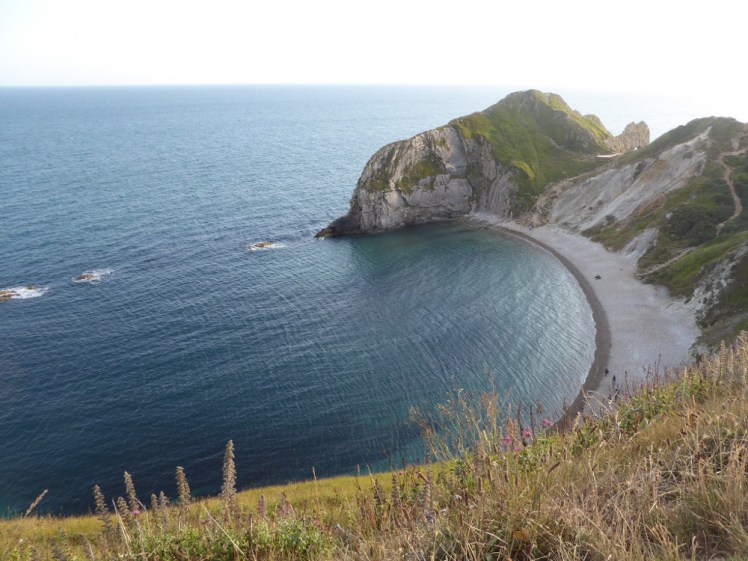
When you get to the bottom, the headland divides the bay in two. The first one, with the amazing coloured water and the rocks sheltering is is Man O’War Beach and it’s likely to be quieter because it doesn’t have the spectacular geological feature. The other, of course, is Durdle Door. The water here can be very shallow. Climbing on Durdle Door is dangerous and jumping off into the water can be fatal. It’s quite a small beach and it’s pebbles. It’s not where I’d choose to spend the day sunbathing but judging by the headlines over the last year, I’m in a very small minority. Either beach is accessed by very rough-hewn rock steps. No stairs here, no lift, no ramp.

If you’re feeling adventurous, you can continue along the cliffs, up and down another three humps until you reach White Nothe, which sticks out a little more than the others, at which point you turn inland and walk back along the ridge and through the caravan park. The return trip to Lulworth works out at 10 or 12 kilometres, with plenty of hills.
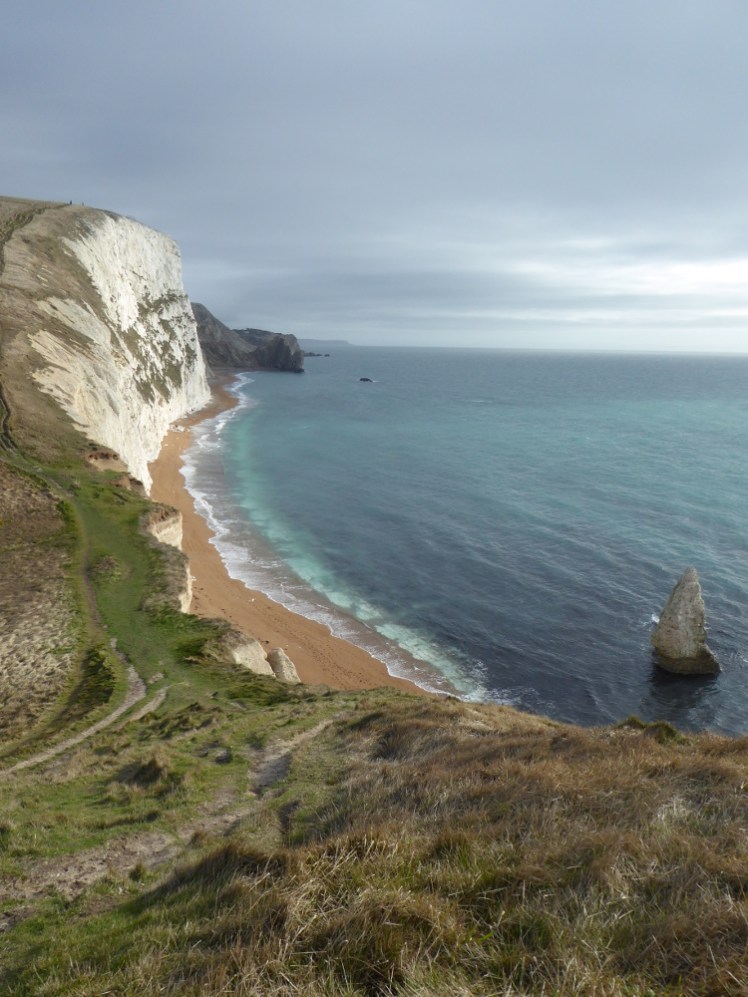
Day Eight
Out at Bovington are two surprising tourist attractions hidden away in the pines. The first is the Bovington Tank Museum and the second is Monkey World.
Bovington is still home to Bovington Camp, headquarters of the Royal Tank Regiment. You’ll see warning signs on the roads. They’ll cross unexpectedly in front of you and they may even appear on the road. They’re slow moving but they’ll mow through absolutely anything. The Tank Museum is the world’s biggest and best collection of tanks, armoured vehicles and anything else indestructible with tracks. I don’t think you get to drive any of them, sadly. If you see a tank in a movie, chances are it lives here. The one in Indiana Jones & the Last Crusade definitely did.
Down the road is Monkey World. For those who are worried about animal welfare, this is a primate sanctuary which acquires some of its running costs by opening to the public. Their aim is to rescue apes, primates, monkeys and anything of that kind from miserable lives around the world and give them a home that’s as close to nature as they can get, while also giving them the medical care most of them need. Some of them came from labs, some from being pet and some were photographers’ props.
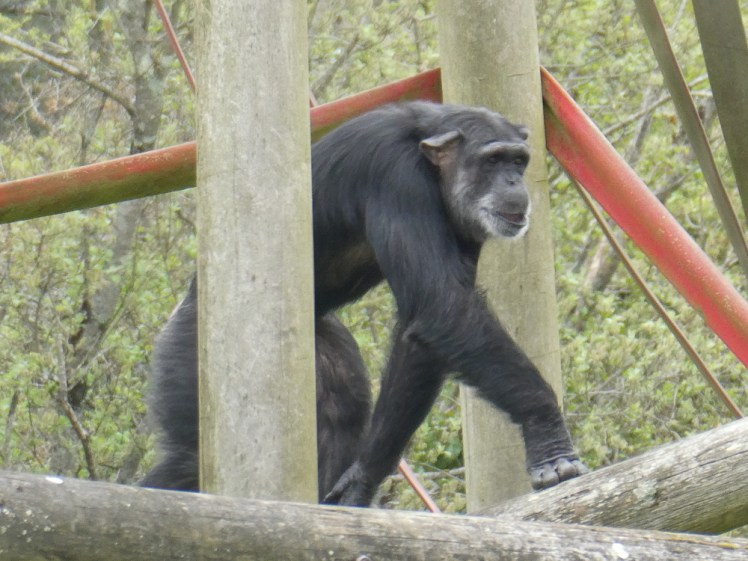
It’s not a zoo. No one is on display, no one has to come out and show themselves to the visitors if they don’t feel like it and mostly they don’t breed. The chimps are all on various contraception because every baby born there is taking up space a rescued chimp could have, but accidents happen and the current youngest accidental baby is Thelma, who will be nine this year.

However, they do breed orang-utans and Bengal slow loris (and maybe a couple of other species of small monkeys) as part of official breeding programmes. They’re also an international orang-utan nursery – they take in abandoned and orphaned babies from all over the world and bring them up as one big family before they either join an adult group or get sent to a new home. The stars of the show are Amy and Gordon. Amy is one of Monkey World’s founder members, along with Jeremy, her keeper and adopted dad. Gordon is Amy’s son, who I remember as a fluffy hand-fed baby and who is now a huge adult with big cheek pads, a son of his own and leader of his group.

You can probably fit both in a single day fairly comfortably and they’re particularly great stops for kids. I don’t know about the Tank Museum but Monkey World is often full by lunchtime in the height of summer so if you want to get it, go early. Right now you’ll need to book in advance and wear a mask for the primates’ protection, even though it’s outside.
Day Nine
If the weather’s appalling, get yourself to Tower Park, Poole’s big leisure complex. People like me will eternally mourn the loss of Icetrax, the ice skating hall, but Splashdown is still present and thriving. It’s a big waterpark with scary slides, fun slides and a lazy river that goes outside in summer and can be diverted to stay inside when it’s colder. It’s eternally hot and humid inside and there’s nowhere better to hide from a rainy day.
Next door is Hollywood Bowl, which I’ve still been calling Megabowl, which has about fifteen bowling lanes and an American-style diner. There’s the bingo hall (boo hiss, that’s where Icetrax used to be!) and the arcades and then the other big attraction is the big Cineworld complex. Scattered in between is every kind of fast food you could want – Nandos, KFC, Taco Bell, Pizza Hut, Pizza Express, Days, Burger King and who knows what since I was last there. It’s a great place to seek refuge from bad weather and even in good weather, it’s a good place to set the kids off to let off steam.
Of course, there are plenty of day trips you can do further afield – notably Southampton, the Isle of Wight and the New Forest so bear them in mind too. But if you’re planning to be in the Poole or Purbeck area, this should keep you entertained for a few days. Leave me a comment if you find anything else you particularly enjoy.